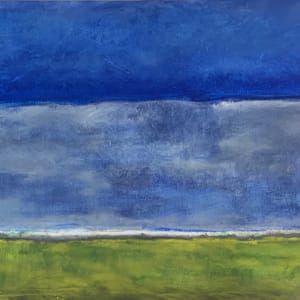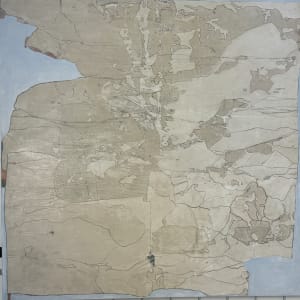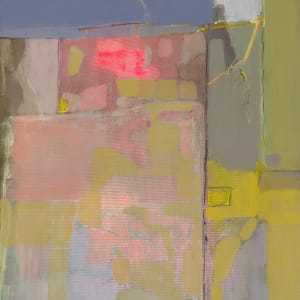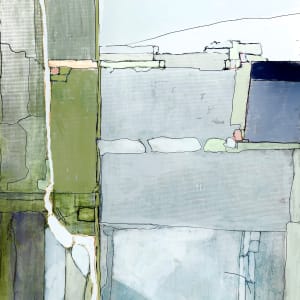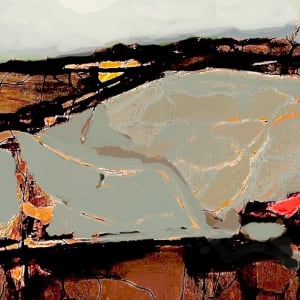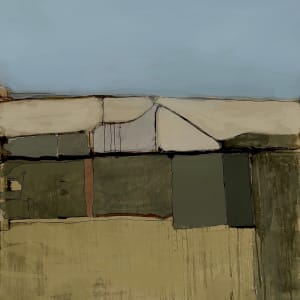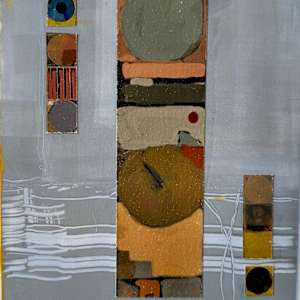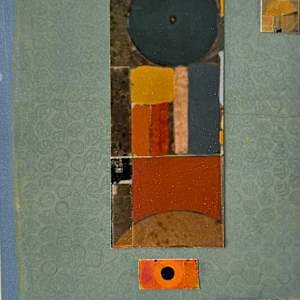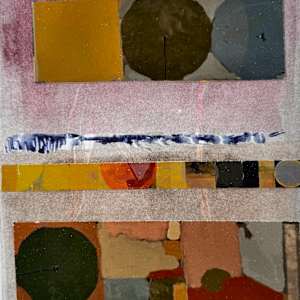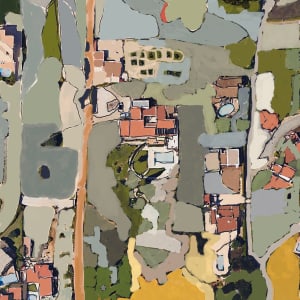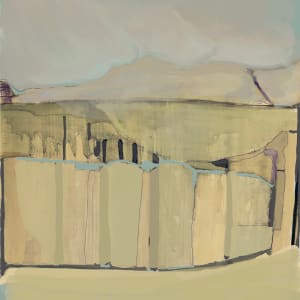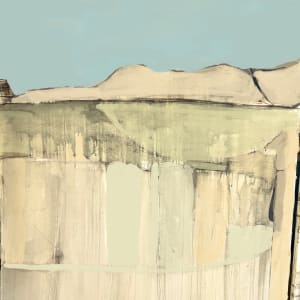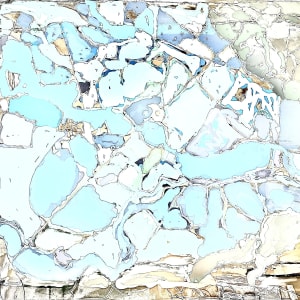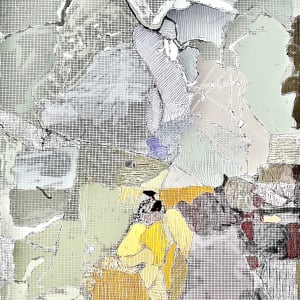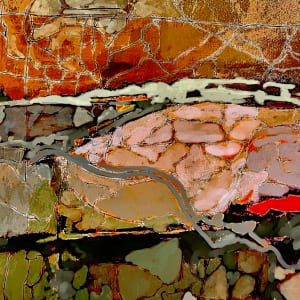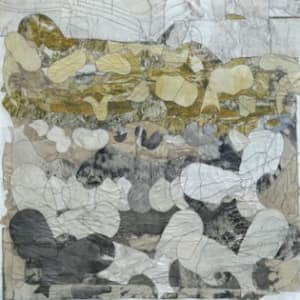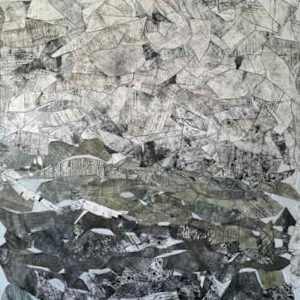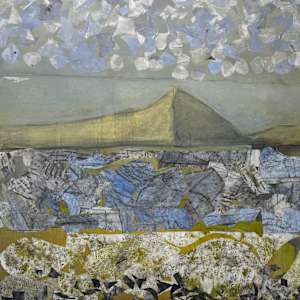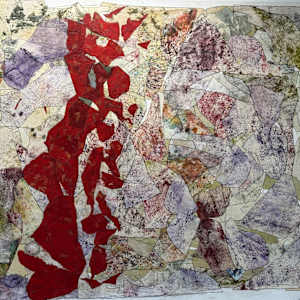AVA Exhibition May 2024
19 Pieces that are part of a Two Artist Show at AVA Gallery in Lebanon , NH May 8-June 10th 2024
Crónicas and Ciphers: Unspoken Language
This series is born from the tension between narrative and abstraction, between what can be said and what must remain unsaid. Each work in Crónicas and Ciphers is a fragment of a story—part memory, part code—rendered in a visual language that resists direct translation.
Geometric forms, layered textures, and shifting color fields become the building blocks of an invented script. Circles, rectangles, and grids operate as ciphers: carriers of meaning that hint at ritual, architecture, or mapmaking but never settle into a single interpretation. These compositions are chronicles without words—documents of feeling, history, and presence recorded in a symbolic vocabulary.
The works invite the viewer to slow down, to read beyond the literal, and to engage in an act of deciphering. Just as language can obscure as much as it reveals, these collages occupy the space between legibility and mystery. They are not answers but invitations: to imagine what cannot be spoken, to hear the resonance of silence, and to find stories in the rhythm of form.
Europe Trips 2023
10 pieces created during two trips this spring - Portugal the Algarve and Alentejo regions and Italy La Marche region around Ancona. All are studies for larger 48x48 painting or 48x60 paintings. All of these are a continuation of the Atlas of Memory series of maps which I started in 2021.
Maps - A Pligram's Progress
Each of the images presented are places I have been over the last 72 years . They are remembered as maps - imagined as seen from above - or as abstract visual memories of those places . A majority of them are about the American West – New Mexico, where I was born, in particular. The rest are spots around the world I have lived or visited.
1. “A map is a drawing of a particular area such as a city, a country, or a continent, showing its main features as they would appear if you looked at them from above.”
2. “The earliest maps must have been based on personal experience and familiarity with local features. They doubtless showed routes to neighboring tribes, where water and other necessities might be found, and the locations of enemies and other dangers. Nomadic life stimulated such efforts by recording ways to cross deserts and mountains, the relative locations of summer and winter pastures, and dependable springs, wells, and other information.”
Takrouna - The Lost Voices
The paintings in this series arise from the scarred landscape of Takrouna, a centuries-old Berber village perched on a narrow ridge in Tunisia. In April 1943, this quiet place became the site of one of the most tragic encounters of the North African campaign.
On that ridge, young Italian conscripts from Trieste—boys pulled from their homes to fight for Mussolini’s collapsing empire—faced a determined band of Māori infantrymen from New Zealand, transported from the green calm of their homeland into the dust and heat of a foreign desert. Both groups, bound by duty and deception, fought in a battle neither chose, under the orders of powers that cared little for their lives.
Caught between them were the Berber villagers of Takrouna—families whose homes clung to the limestone slopes, whose ancestors had tilled that rocky soil for generations. When the fighting came, they lost everything: their dwellings shelled, their families scattered, their sacred hill turned into a fortress and then a grave. Theirs is the quietest tragedy, seldom recorded yet always present in the stones and wind of the place.
Through layered collage and torn monotype fragments, Anderson rebuilds that landscape of loss and endurance. The pale blues, greys, and ochres recall both the desert’s brilliance and its desolation. Each fractured surface becomes a field of memory—where the lives of soldiers and villagers alike blur into the same dust.
These works are elegies for all who stood on that ridge—the conquerors, the conscripted, and the innocent. The land endures, indifferent yet compassionate, absorbing every sorrow into its strata.
Takrouna stands silent now. The stones remember the footsteps of soldiers and mothers alike, and the wind carries the lament of those who never returned.
The Condition of Music
Artist Statement — The Condition of Music Series
“All art constantly aspires to the condition of music.” — Walter Pater
The Condition of Music is a body of work born from that idea — that painting, like music, can hold rhythm, silence, dissonance, and grace without the need for words or narrative. Across this series, I explore how sound becomes form and emotion becomes structure. Each piece is an interpretation of a musical work or tradition — from Baroque counterpoint to jazz improvisation, from folk song to modern lament — translated into the language of abstraction.
In these paintings, gesture functions as phrasing; color, like tonality, sets mood and key. Layers of paper, pigment, and graphite move as overlapping voices do in a fugue or canon — repetition, variation, and echo creating visual polyphony. Some works pulse with syncopation and drive, others hover in suspended rhythm, like breath held between notes.
Pieces such as Les Barricades Mystérieuses draw from the structured elegance of Baroque ornament — repetition as meditation, restraint as beauty. They Dance Alone carries the mournful resonance of Sting’s Cueca Solo, its quiet lament unfolding in E minor tones of sorrow and endurance. A Night in Tunisia translates the restless improvisation of jazz into motion and texture — where visual rhythm replaces sound but keeps its pulse. Sumer is Icumen In celebrates early English polyphony, a chorus of rebirth and renewal, while The Wind Is In from Africa recalls the open, wandering melody of Joni Mitchell’s Carey, a folk song filled with light, longing, and memory.
Each work moves within its own tonal register — major and minor, harmony and dissonance — yet together they form a larger orchestration of emotion and history. What unites them is not their reference to specific pieces of music, but their pursuit of the condition that music achieves: immediacy, structure through time, and the ability to convey feeling beyond representation.
In The Condition of Music, painting becomes performance — an improvisation of rhythm, color, and silence. The surface is both score and instrument. What emerges is not an illustration of music, but its echo — the point where sound dissolves into space and becomes visible.


